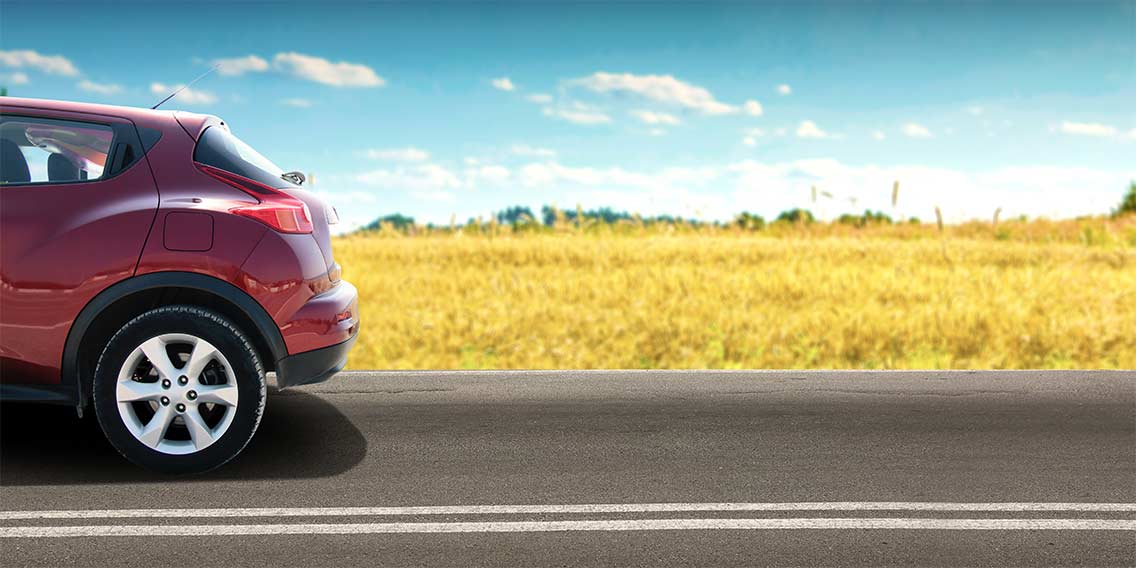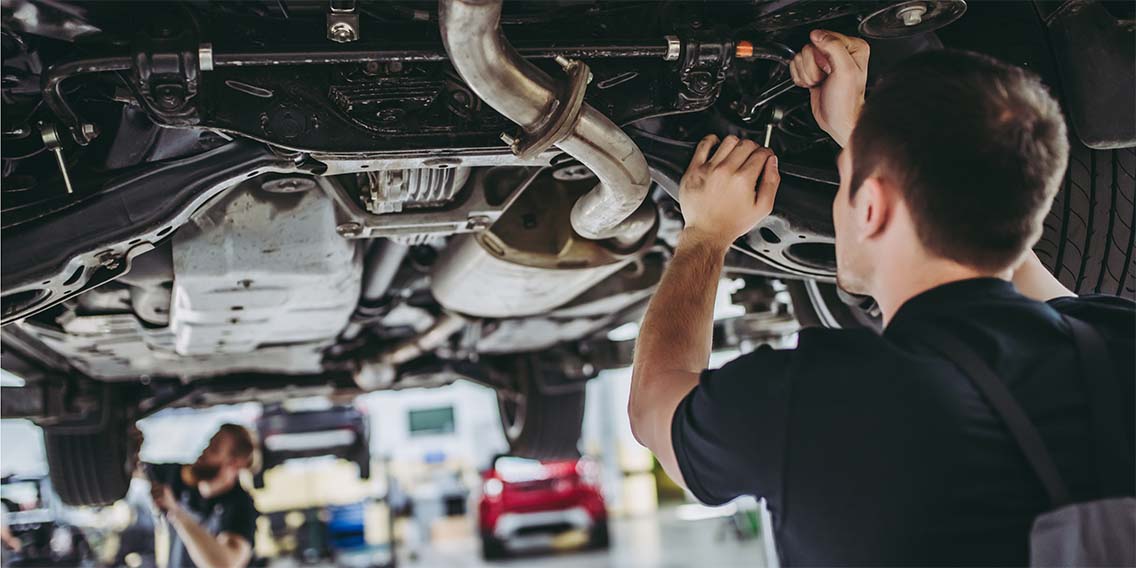AUTO
Car Maintenance by Season: Your Vehicle Maintenance To-Do List
EXPECTED READ TIME: 10 MINUTES
Taxes, insurance, license, registration…the true cost of car ownership can be quite a bit higher than the sticker price of your new vehicle. But there's one more thing you'll want to factor in: regular maintenance.
To maximize the benefits of your car — and to get the greatest return on your investment — it's best to make ongoing, preventative maintenance a priority. These 20 car care tips, broken down by season, will help preserve the value of your vehicle and ensure your safety for years to come.
Spring Car Maintenance Tips
Spring is a time of re-awakening, so it only makes sense to breathe a little life back into your vehicle once the flowers begin to bloom. Here are five pointers to get your ride ready for warmer weather.
1. Clean Your Vehicle
New or used, you definitely want to keep your car looking fresh. One of the best (and easiest) things you can do for your car or truck after a long winter is to wash it thoroughly — particularly the underside. Salt build-up from snow-melting products left on the underbody can eat away at the car's frame and lead to pockets of rust over time. Debris and road grime that collect on your vehicle during the winter can also dull its shine and eventually damage your paint finish.
Since you're already in cleaning mode, go ahead and spruce up your car's interior as well. Take time to vacuum the seats and carpet, wash the windows, and remove any paper and trash that may have accumulated over the past few months. Also be sure to disinfect high-touch surfaces like the steering wheel, gear shift knob, temperature and radio controls, and door handles with an anti-bacterial cleaner or wipes.
2. Inspect Your Tires
Tire pressure fluctuates with the weather. As outside temperatures drop, the air in your tires takes up less volume, causing the air pressure to decrease. The opposite happens as temperatures rise.
When spring rolls around, check the pressure of your tires to ensure they're all within the range recommended by the manufacturer (typically 32 to 35 pounds per square inch, or PSI). If your tires are overinflated — which is likely if you added air during the winter — it can create a bumpier ride, affect gas mileage, and lead to premature tire wear.
After inspecting air pressure, measure tire wear by inserting a standard penny headfirst into the tread. If you see part of Abraham Lincoln's head, you should replace your tires. Also check the sides of your tires for cuts or other damage that could weaken the sidewall and contribute to a blowout in hotter weather.
Measure tire wear by inserting a standard penny headfirst into the tread. If you see part of Abraham Lincoln’s head, you should replace your tires.
3. Look Under the Hood
Cold temperatures during winter can cause rubber to become brittle and split. Pop your hood and inspect all your hoses and belts for obvious signs of wear. Replace any that appear cracked or deformed.
While you're poking around, check your engine oil and make sure you have plenty of coolant in your radiator. If needed, top off your brake fluid and windshield washer fluid as well.
4. Change Your Air Filters
Clean air is crucial to well-being, even for cars. Changing your vehicle's air filter once a year or every 15,000 miles helps to keep your engine free of dirt, dust, and other contaminants that can damage internal components.
With pollen and allergies wreaking havoc, spring is also a good time to check the filter in your cabin's climate control system. Most manufacturers recommend replacing interior filters at least every 30,000 miles.
5. Replace Your Wiper Blades
Car care specialists recommend replacing your wiper blades every six months, making spring the perfect time for a new set. That way you can see clearly through your windshield before, during, and after those April showers give way to May flowers.
Summer Car Maintenance Tips
You know it's summer when you see the familiar heat haze above the highway as it carries you toward another great vacation, or maybe it's the steam that rises from the blacktop after a summer rain. Either way, road trips, hot asphalt, and rising temperatures can add a lot to the wear and tear on your vehicle.
Keep the car of your dreams humming when the heat and humidity set in with these five tips for summer car maintenance.
1. Change Your Oil and Oil Filter
Opinions vary on when and how often to change your engine oil. Some car owners subscribe to the somewhat dated "every three months or 3,000 miles" rule of thumb, while others adhere to oil-change intervals ranging from 5,000 to 7,000 miles.
Rules of thumb aside, we suggest at least changing your oil (full synthetic or synthetic blend is ideal) and oil filter before heading out on your summer road trip. Fresh oil will keep your engine parts lubricated and moving smoothly, while the new filter will remove any impurities and metal fragments that might otherwise find their way into the motor.
Fresh oil will keep your engine parts lubricated and moving smoothly.
2. Check Your Fluids
Being stranded on the side of the road with an overheated engine might look like an adventure in the movies, but it's no picnic in the middle of a heat wave. Check your coolant level frequently throughout the summer. If the amount of fluid consistently decreases, you may have a leak in your radiator or other issues that need to be addressed.
Seasonal weather changes can also cause other essential fluid levels to fluctuate. Make a habit of periodically checking levels for your power steering, brakes, and transmission. These systems and components rely on specific fluids to function properly, so levels should always be maintained in the designated working range.
3. Monitor Your Tire Pressure
As we mentioned earlier, the air pressure in your tires increases when the temperature rises. That's why it's a good idea to routinely check tire pressure throughout the hotter months.
External temperatures and the heat transferred from the road to your tires can generate swings of several pounds in air pressure. It may seem inconsequential, but that extra pressure can impact how your vehicle rides and the longevity of your tires.
4. Get Your Vehicle Aligned
Alignment can be thrown off over time with general wear and tear or it can be caused by running into potholes, hitting curbs, or riding on rough surfaces for extended periods.
If you're planning a long summer trip, you should inspect your vehicle's alignment. Proper alignment improves the handling and overall ride of your automobile, extends tire life, and reduces damage to your suspension and other critical components. It can even enhance fuel efficiency.
5. Inspect Your Brakes
It's fun to let the good times roll, but eventually, they must come to a nice, smooth stop. Your brakes ensure that they do just that — when and where you intend — making the pedal located to the left of the accelerator the most important safety feature on your vehicle. If your brake pedal is tough to push or you can hear a screech when you brake, there could be cause for concern.
Summer's added impact of stop-and-go traffic, long road trips, and increased heat takes an even greater toll on your braking system.
Even if your brakes aren't making noises or requiring you to press harder to come to a stop, you should have them checked annually to ensure they're in good condition, especially if you think you might trade in or sell your vehicle before the odometer maxes out.
Fall Car Maintenance Tips
Fall may be known for cool weather, vibrant colors, and festive gatherings, but when it comes to car care, autumn is a critical transition period. Take these five steps to help head toward winter with confidence.
1. Check Your Battery
Summer and winter can be brutal on your battery, so the season sandwiched between the two is a prime time for a little maintenance. Make sure your battery cables and terminals are clean, tight, and free of corrosion. Bad connections can prevent enough voltage from getting to the starter to crank your vehicle.
You should also ensure your battery is charging properly. Many auto parts stores will check your battery for free so you have a better idea of when it will need replacing.
Many auto parts stores will check your battery for free so you have a better idea of when it will need replacing.
2. Test Your Vehicle's Lights
With days getting shorter, you'll be using your vehicle lights more frequently and for longer periods of time. Protect yourself and others on the road by testing your headlights, taillights, brake lights, and turn signals to confirm they're in working order. Replace any bulbs that have burned out or have a mechanic check the electrical system if you're experiencing other issues with your lights.
Make sure your interior lights are in good working order too and remember to switch them off or to "door" mode to save battery life.
3. Crank the Heat
Regardless of the outside temperature, take a few minutes to check your heat once fall starts. The same system that controls your heat and A/C also ventilates and dehumidifies the interior of your vehicle. That makes it important for comfort as well as safety. These systems can also be complicated to replace, so keep them in working order and repair small issues promptly to avoid large replacement costs down the road.
4. Steer Clear of Suspension Issues
Whether or not you're experiencing issues with the way your vehicle rides, it's a good idea to have a mechanic look over your suspension and steering system before winter returns. Worn out shock absorbers, struts, chassis parts, and related components can make your car more difficult to control in snow and ice come winter.
5. Give Your Tires Some (More) Love
Fall may not be as harsh on your car or truck as summer and winter, but that doesn't mean you should neglect your tires. Truth is, tire inspection and maintenance should be a year-round commitment.
Just as you did in spring and summer, check the tread, inflation, and overall condition of your tires. Autumn is also a great time to have your tires rotated and balanced. This will help them wear evenly and provide a smoother ride.
Worn out shock absorbers, struts, chassis parts, and related components can make your car more difficult to control.
Winter Car Maintenance Tips
Winter can be quite the menace when it comes to the health of your vehicle. Here are five ways to help your car thrive when temperatures start to dive.
1. Get a Better Grip
If you live in an area prone to large amounts of snow and ice, consider swapping out your regular tires for winter tires. The extra traction will really help when you're trying to stop, start, and turn in extreme weather.
2. Fill Your Antifreeze
Remember how coolant keeps your engine from overheating when it gets hot? Antifreeze — another name for coolant — works in a similar fashion when it's cold outside by keeping your engine from freezing.
Before temperatures dip too far, check the coolant/antifreeze level in your radiator and overflow tank. If it's low, add a 50/50 solution of coolant and water. Also look out for any leaks under your vehicle that would indicate you have a leak in your radiator or any of its connecting hoses.
3. Replace Your Wiper Blades (Again)
Yes, you replaced them in the spring. Consider doing it again for the winter — wipers get worn down faster than you think. The $20 to $30 you'll spend for a pair of new wiper blades is a small price to pay for your safety. While you're at it, don't forget to make sure your wiper fluid is full.
4. Pack an Emergency Kit
Getting stuck on the side of the road is inconvenient in any season. During winter, it can be downright dangerous.
Be prepared for the unexpected. Pack a survival kit and keep it in your vehicle throughout winter to get you through an extended roadside emergency in the (hopefully) unlikely event that you wind up in one. Include the following items:
- Gloves
- Ice scraper
- Flares
- Blanket
- First aid kit
- Jumper cables
- Flashlight (with good batteries)
- Cell phone charger
- Motor oil
- Coolant (antifreeze)
- Rags or paper towels
- Bottled water and snacks
5. Check Tire Pressure Weekly
Forget one and done. When it comes to checking tire pressure in the winter, you should increase the frequency to weekly. Aside from causing premature wear, driving on underinflated tires can reduce your vehicle's traction on icy or slippery surfaces.
The Takeaway
Next to your house, your car is likely be one of the largest purchases you'll make. If you treat your vehicle as an extension of your home and give it the same TLC you reserve for the place you rest your head, you'll be good to go all year round.
Find Out More About Car Loan Options Through PenFed
Discover the diverse offering of products, services, and support available to our members.




